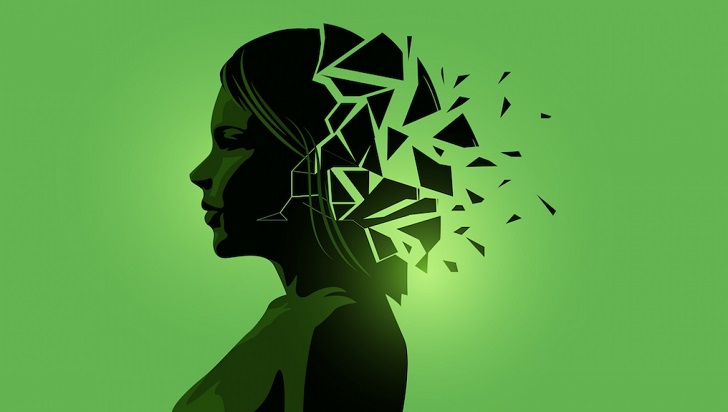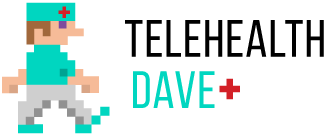
The Role of Art and Technology in Mental Health

Art and technology can potentially revolutionize how we approach mental health. With the advancements in technology and the integration of art, we have seen a shift in how people seek help and treatment for mental health issues. Here are some ways art and technology play a critical role in mental health.
Art Therapy
Art therapy is a form of therapy that uses creative expression to promote healing and well-being. Art therapy can treat various mental health issues, including anxiety, depression, and PTSD. By using art as a medium, individuals can explore their thoughts and emotions in a safe and non-judgmental environment.

Sarah Finch/ Pinterest | There is hope, even when your brain tells you there isn’t
Art therapy has been used for centuries, but with the integration of technology, it has become more accessible than ever. Online art therapy platforms allow individuals to participate in art therapy sessions from the comfort of their own homes. These platforms provide access to licensed therapists who can guide individuals through creating art to help them explore their emotions and promote healing.
Virtual Reality Therapy
Virtual reality (VR) technology has been used to treat various mental health issues, including anxiety disorders, PTSD, and phobias. VR therapy allows individuals to immerse themselves in a virtual environment that simulates real-life situations. This immersive experience can help individuals face their fears and anxieties in a controlled and safe environment.
Virtual reality therapy is effective in reducing symptoms of anxiety and PTSD. In a study by the University of Southern California, participants who underwent virtual reality therapy showed significant improvement in their symptoms compared to those who underwent traditional therapy.
Mindfulness Apps
Mindfulness apps are becoming increasingly popular in the field of mental health. These apps provide guided meditations and mindfulness exercises to help individuals manage their stress and anxiety. By practicing mindfulness, individuals can learn to be present at the moment and become more aware of their thoughts and emotions.

Sarah Finch/ Pinterest | Tough times never last, but tough people do!
Mindfulness apps are a great way to integrate technology into your mental health routine. These apps are convenient and can be accessed anywhere, anytime. They can also be personalized to fit the specific needs of the individual.
Artificial Intelligence Therapy
Artificial intelligence (AI) has the potential to revolutionize the field of mental health. AI therapy can provide a personalized treatment plan for individuals with mental health issues. By analyzing data from various sources, including social media, wearables, and other apps, AI can provide insights into an individual’s mental health and suggest personalized treatment plans.
AI therapy can potentially make mental health treatment more accessible and affordable. By using AI to analyze data, therapists can provide more personalized treatment plans without needing face-to-face consultations. This can help individuals who may not have access to traditional mental health services.

Sarah Finch/ Pinterest | Technology has opened up new avenues for accessing mental health
Teletherapy
Teletherapy is the use of technology to provide mental health services remotely. Teletherapy can be conducted through video conferencing, phone calls, or text messaging. This form of therapy allows individuals to receive mental health services from the comfort of their own homes.
Teletherapy has become increasingly popular during the COVID-19 pandemic, as more individuals seek mental health services but are unable or unwilling to leave their homes. Teletherapy has also been effective in treating various mental health conditions, including depression, anxiety, and PTSD.
More in Mental Health
-
`
Hair & Makeup Designer Sarah Rubano Talks Turning Mia Goth Into Pearl
Transforming an actor into an unrecognizable character is no small feat, and Mia Goth’s Pearl makeup in the hit movie “Pearl”...
December 17, 2024 -
`
The Physical Signs of Hunger and How Mindful Eating Makes a Difference
Hunger is one of the most basic yet essential signals our body uses to communicate its need for energy. However, many...
December 15, 2024 -
`
Why Did Chris Pratt Call Anna Faris Before Proposing to Katherine?
Chris Pratt, the beloved star of “Guardians of the Galaxy,” made headlines when he revealed that he called his ex-wife, Anna...
December 3, 2024 -
`
6 Proven Tips to Tackle Insurance Claim Denials Successfully
Claim denials are a common hurdle for healthcare providers and professionals, even for those who follow the necessary procedures to avoid...
December 1, 2024 -
`
5 ‘Bad’ Fitness TikTok Trends You Shouldn’t Follow
TikTok has become a haven for creative fitness advice. But not all trends are worth your time or your health. From...
November 23, 2024 -
`
Does Drinking Water Affect Adrenal Hormones?
Drinking water is often seen as a simple way to stay hydrated, but it has deeper effects on our body than...
November 14, 2024 -
`
Why We Feel the Loss of Celebrities So Deeply?
Celebrity grief might sound strange at first. After all, most of us have never met these famous figures in person, yet...
November 5, 2024 -
`
Are High Deductible Insurance Plans as Ideal as They Appear to Be?
High deductible insurance plans have been a hot topic for years, especially as healthcare costs continue to rise. For many Americans,...
October 31, 2024 -
`
How Training Load Data Can Transform Your Exercise Routine
Tracking progress during workouts is challenging. Simple metrics like mileage or time don’t show the whole picture. Understanding the overall effort...
October 26, 2024















You must be logged in to post a comment Login